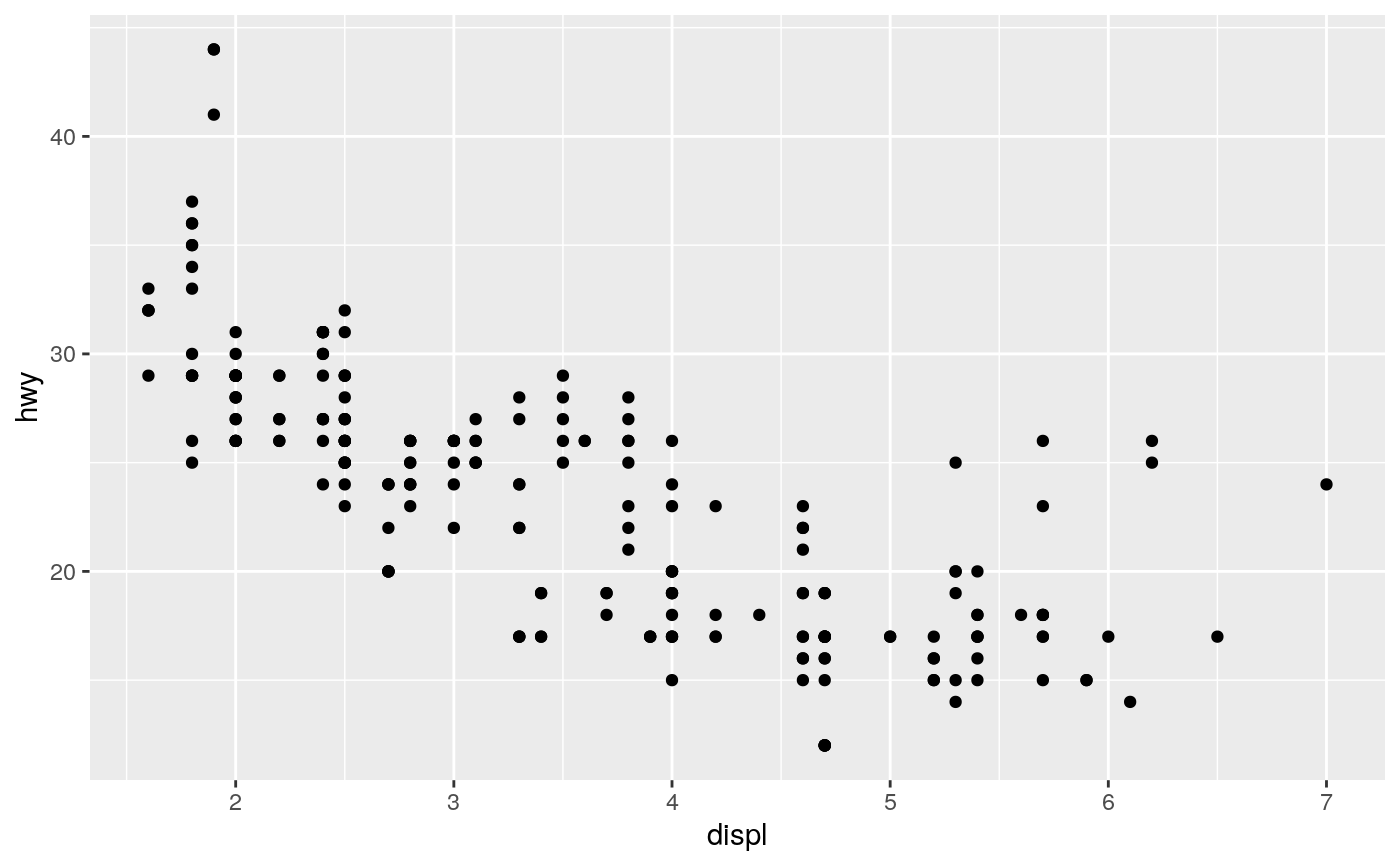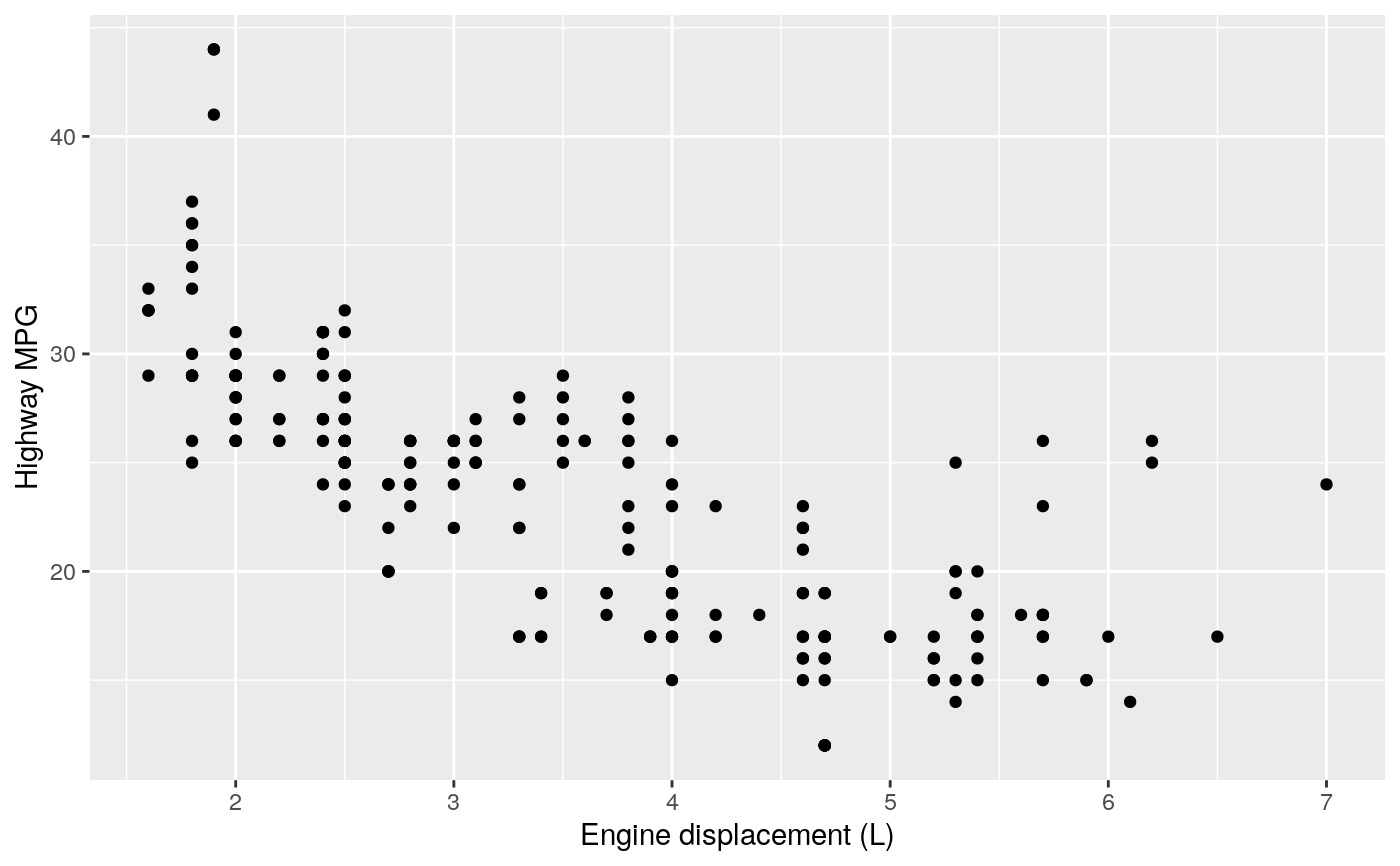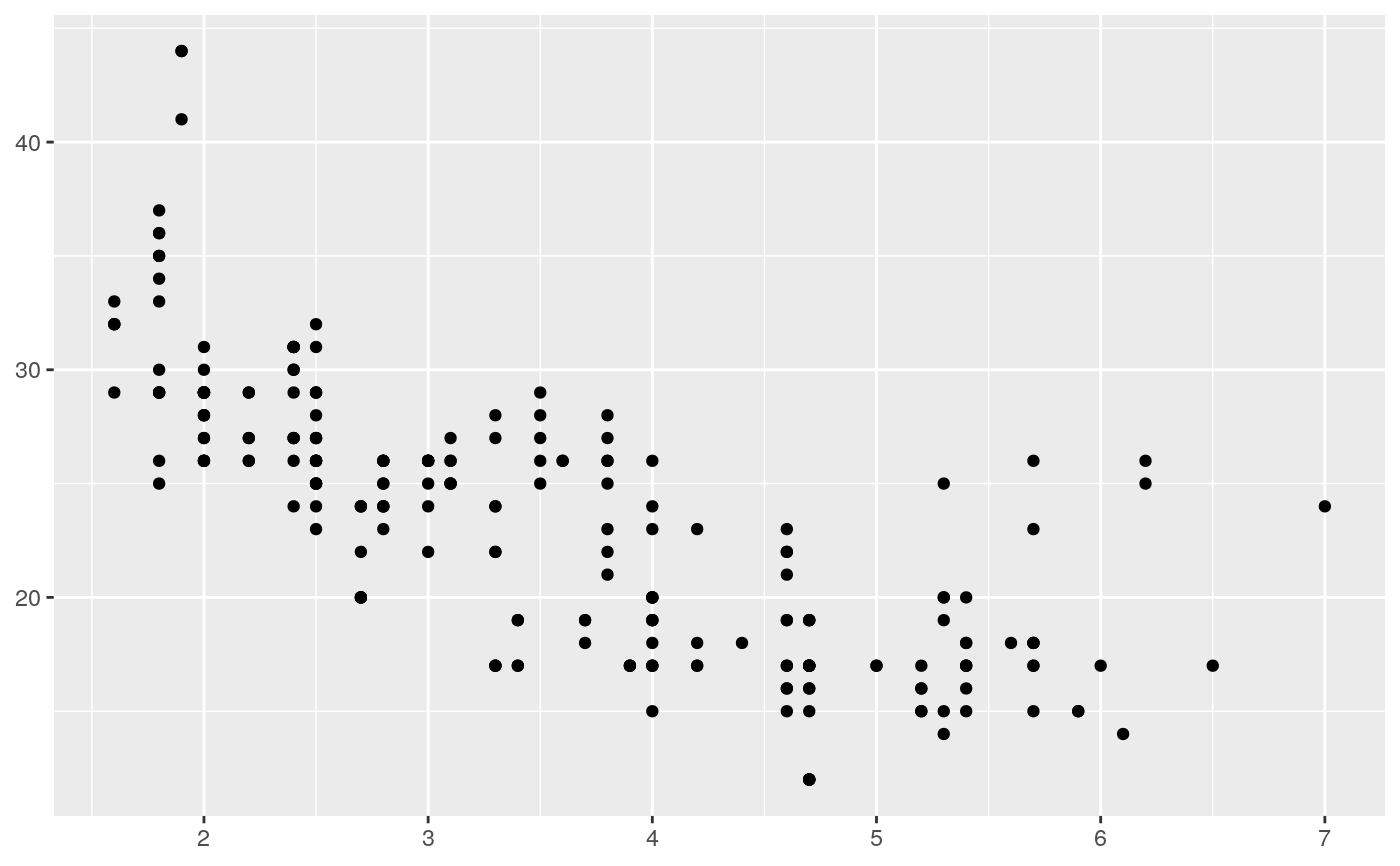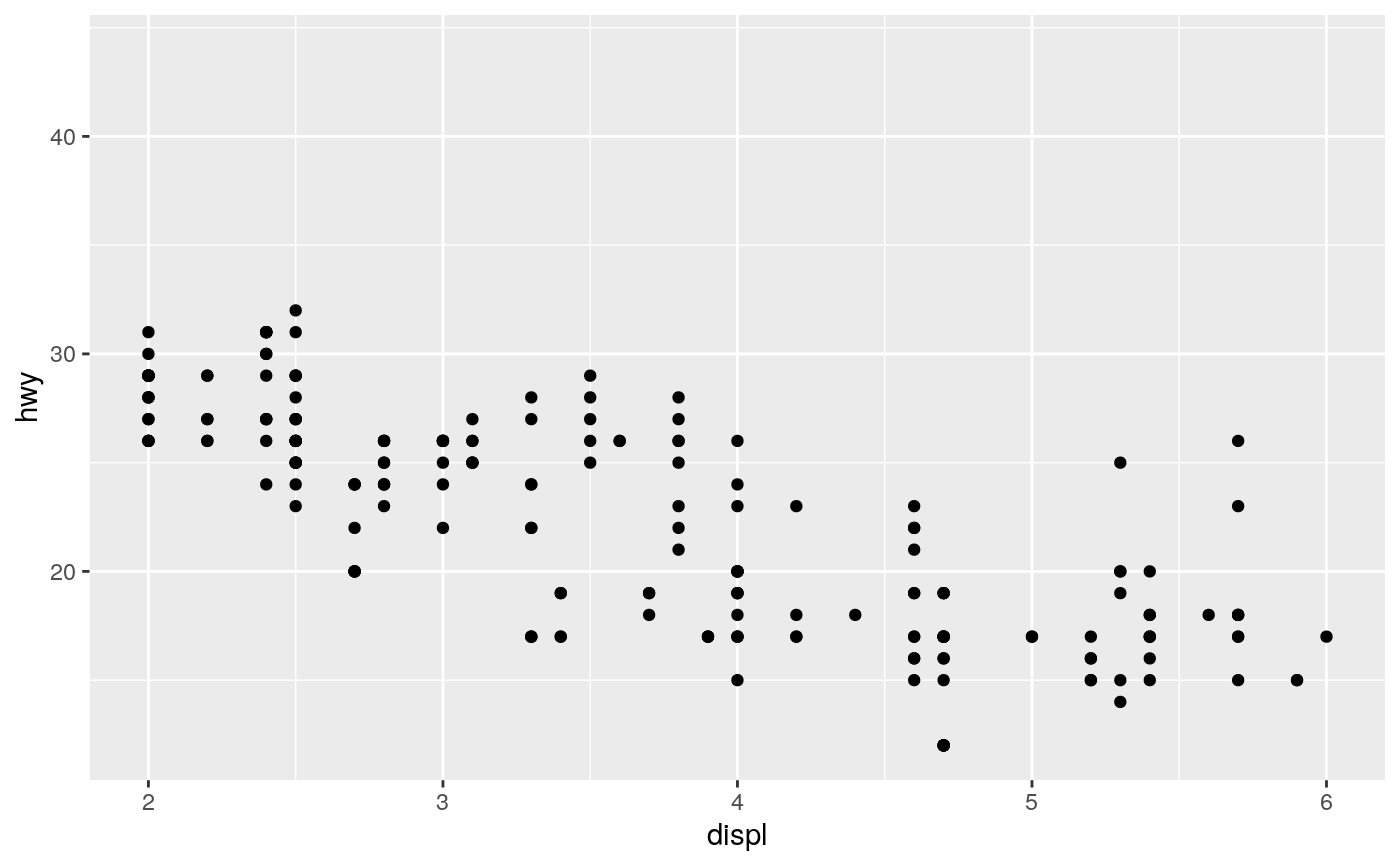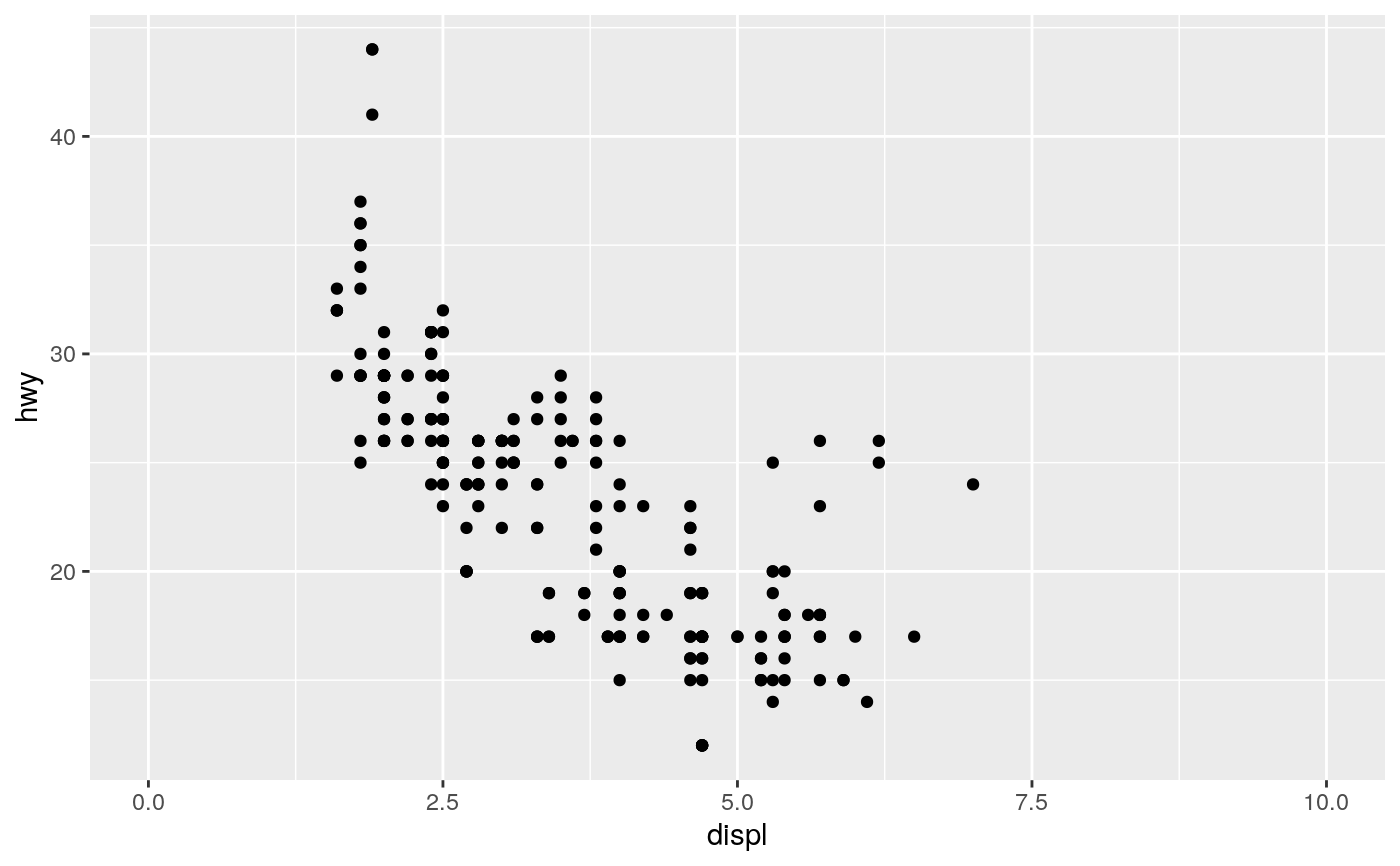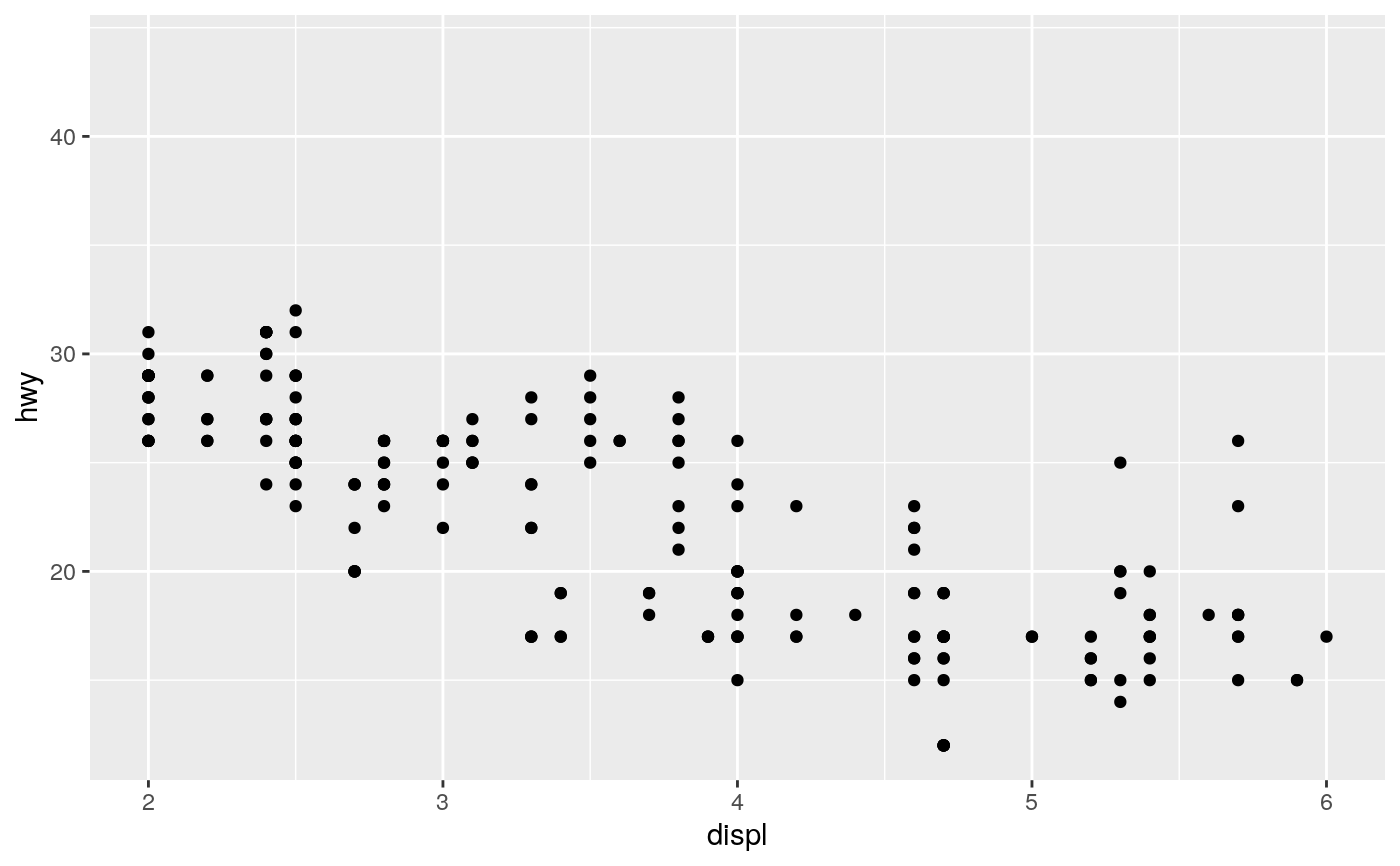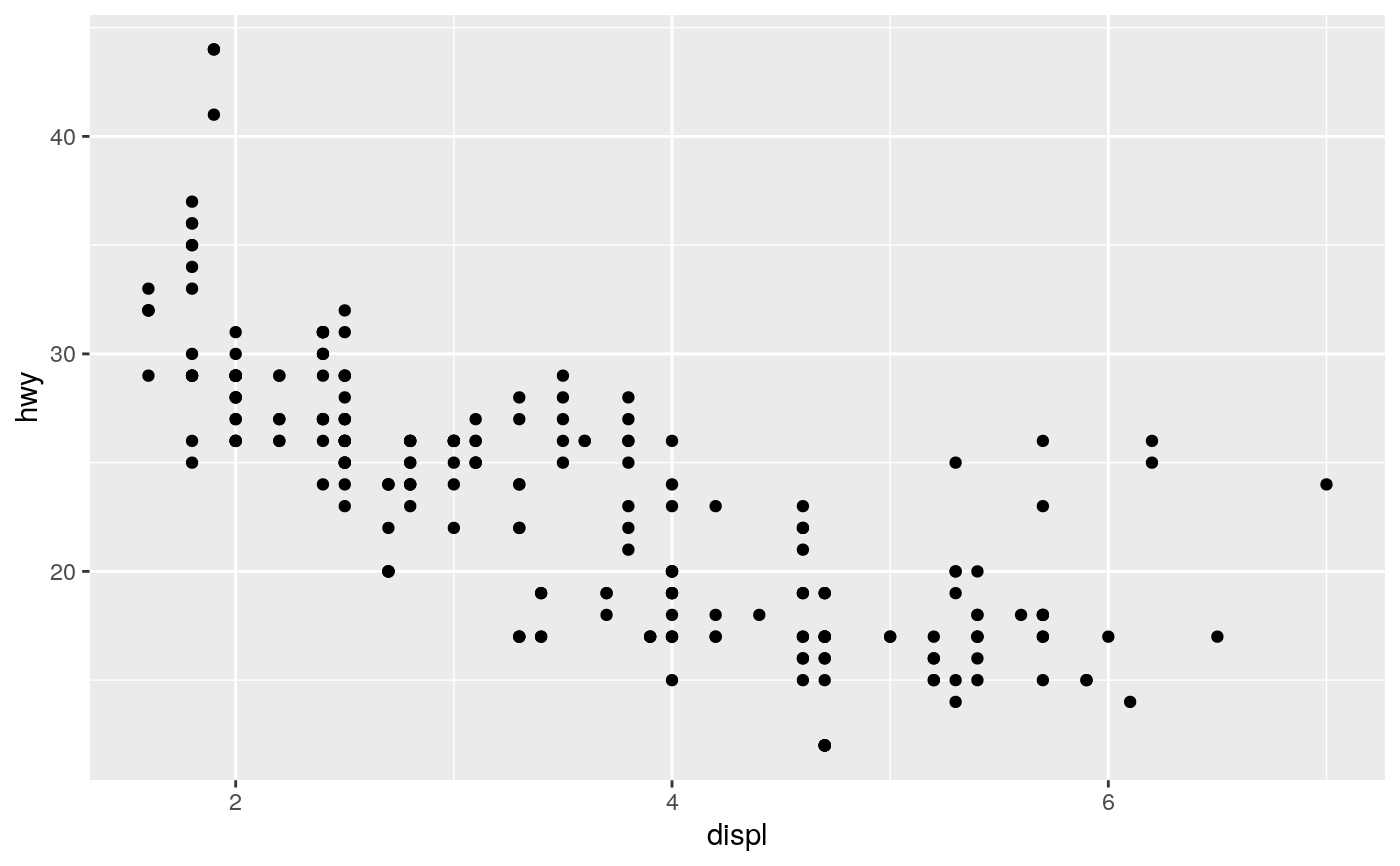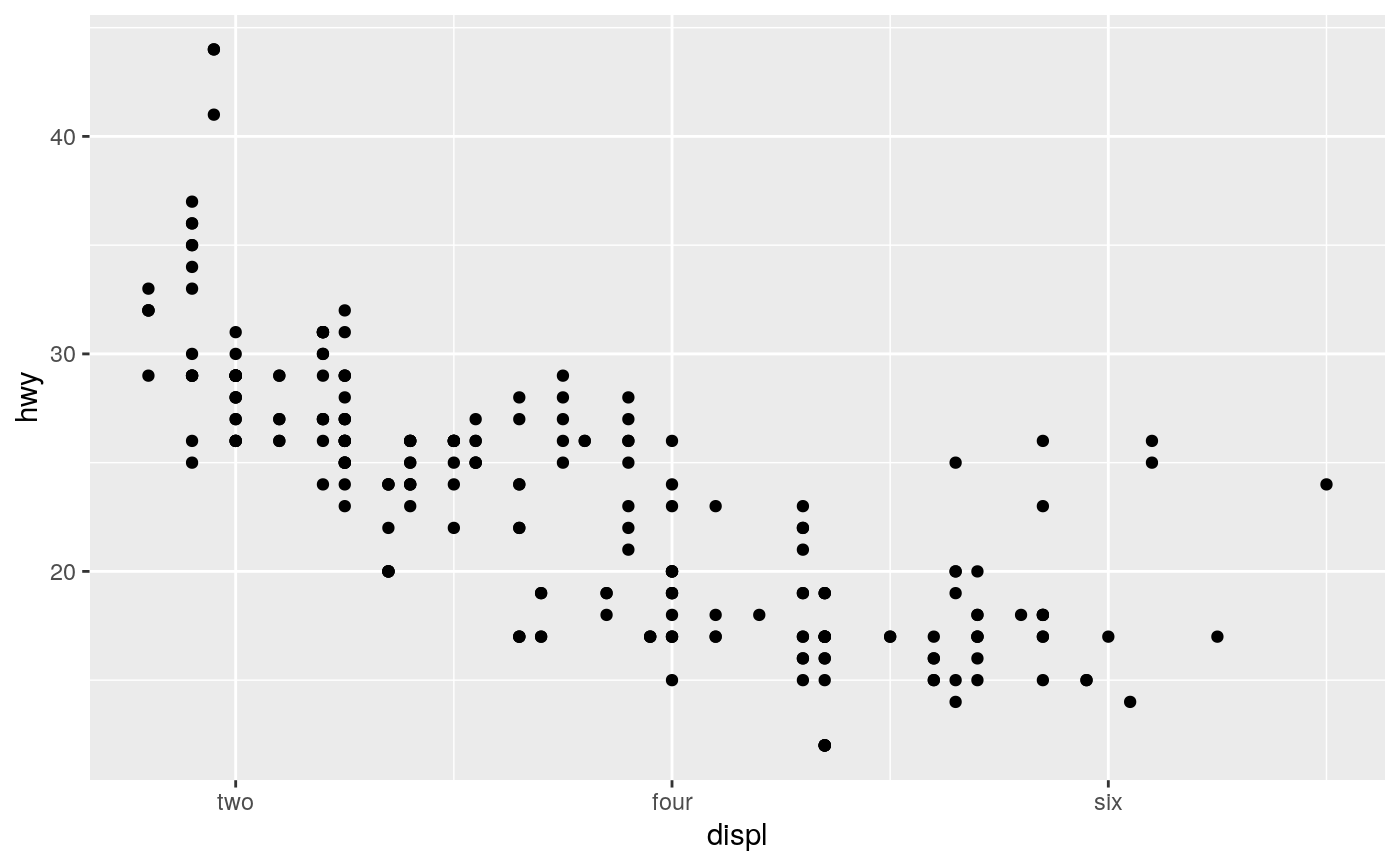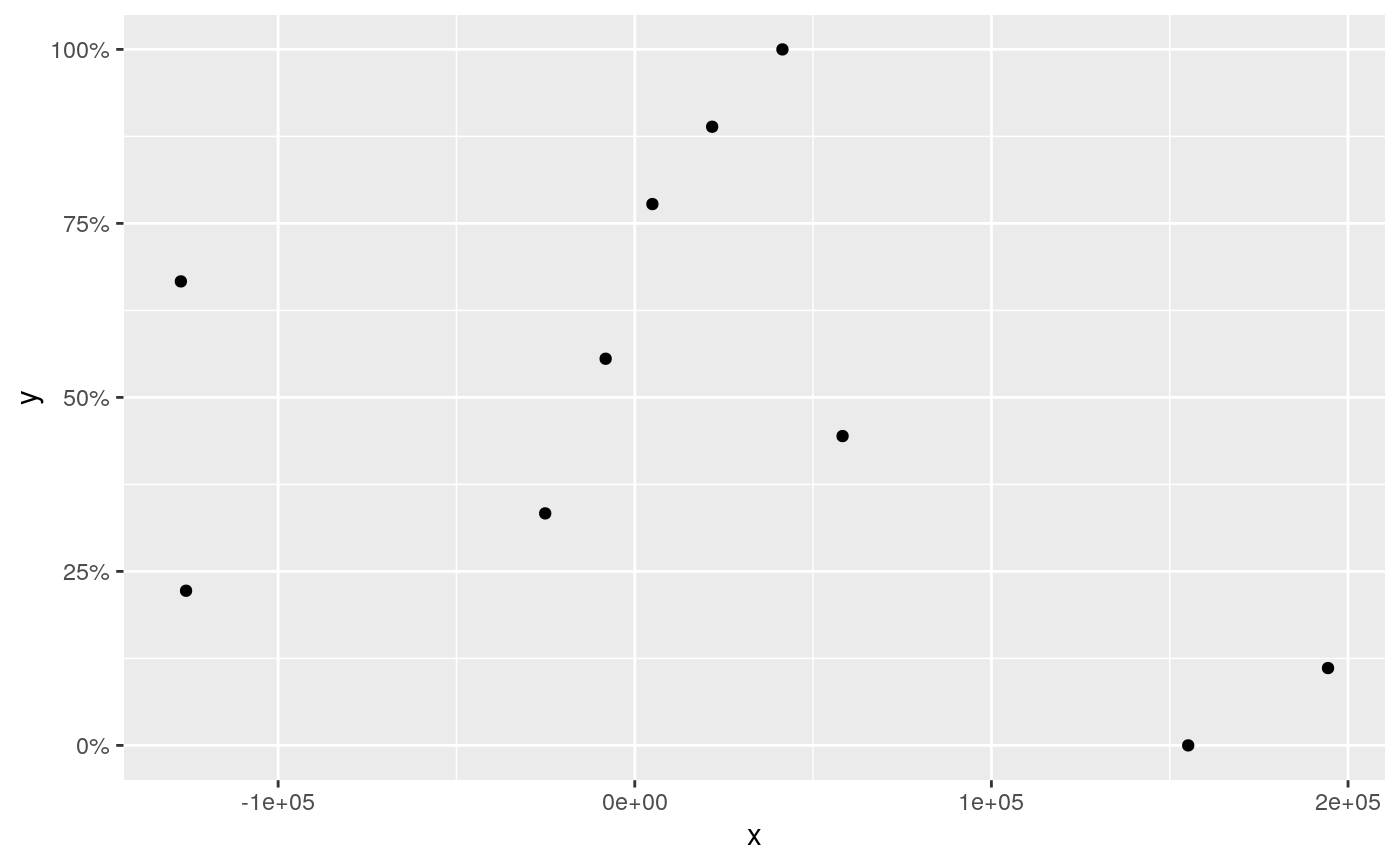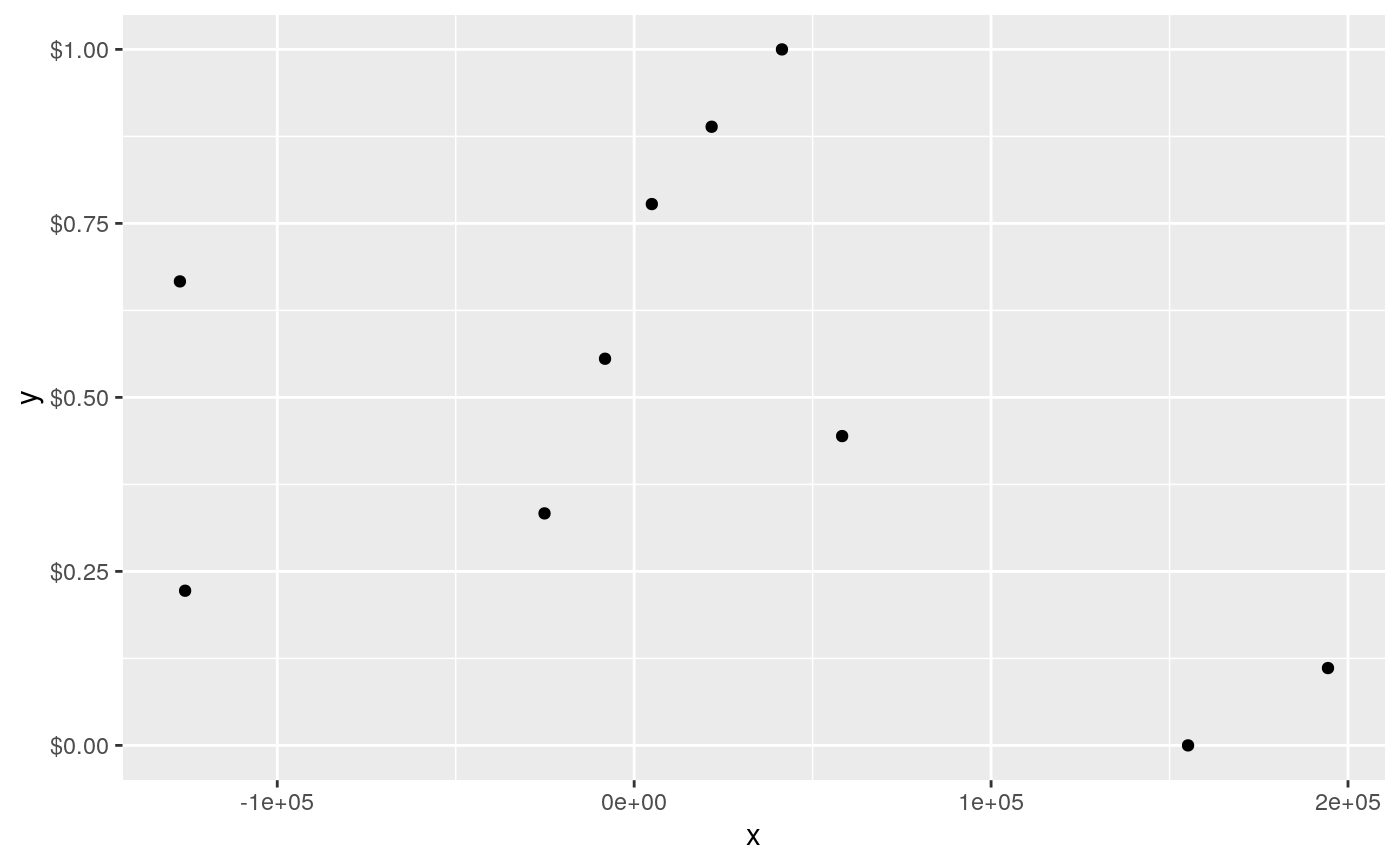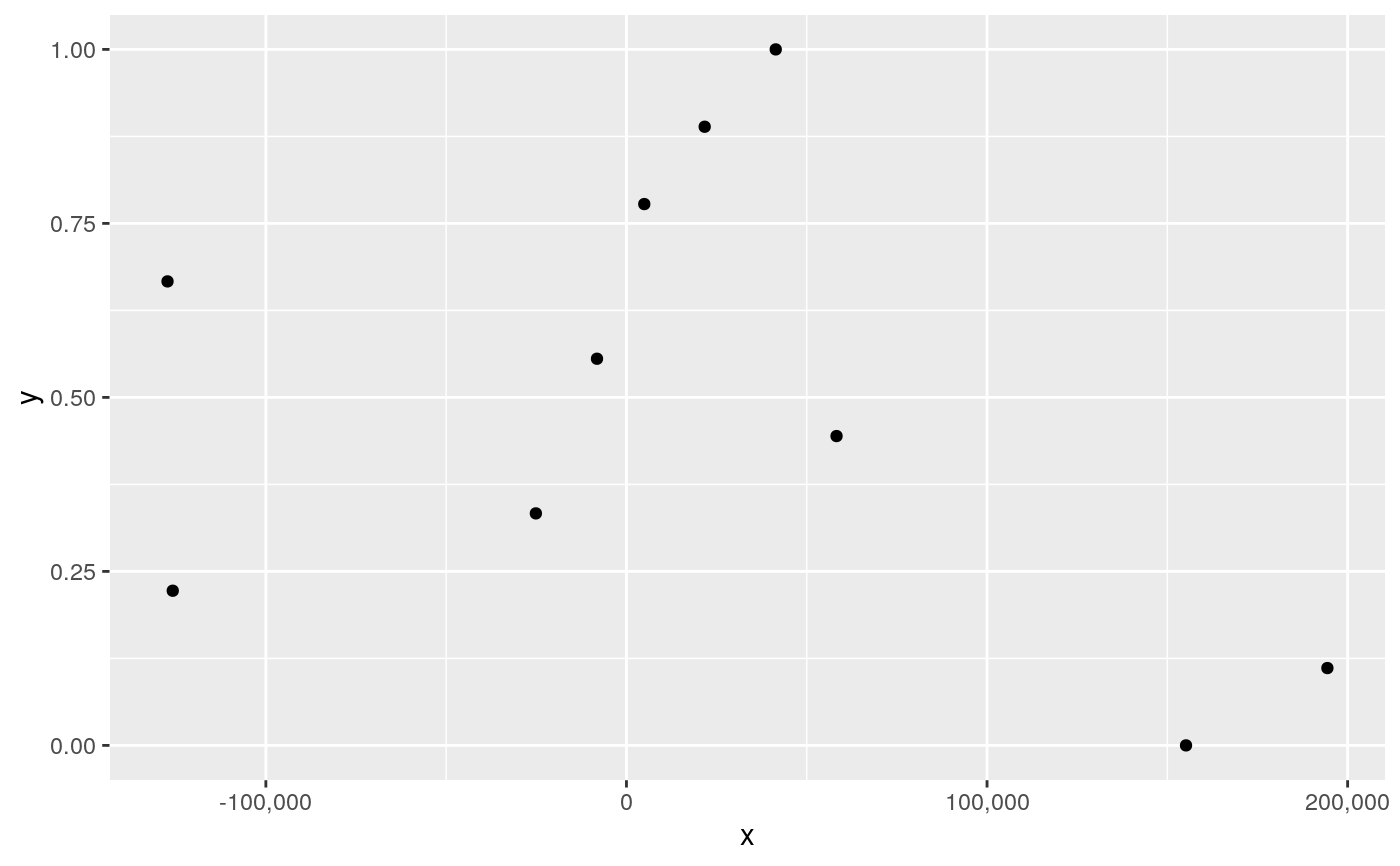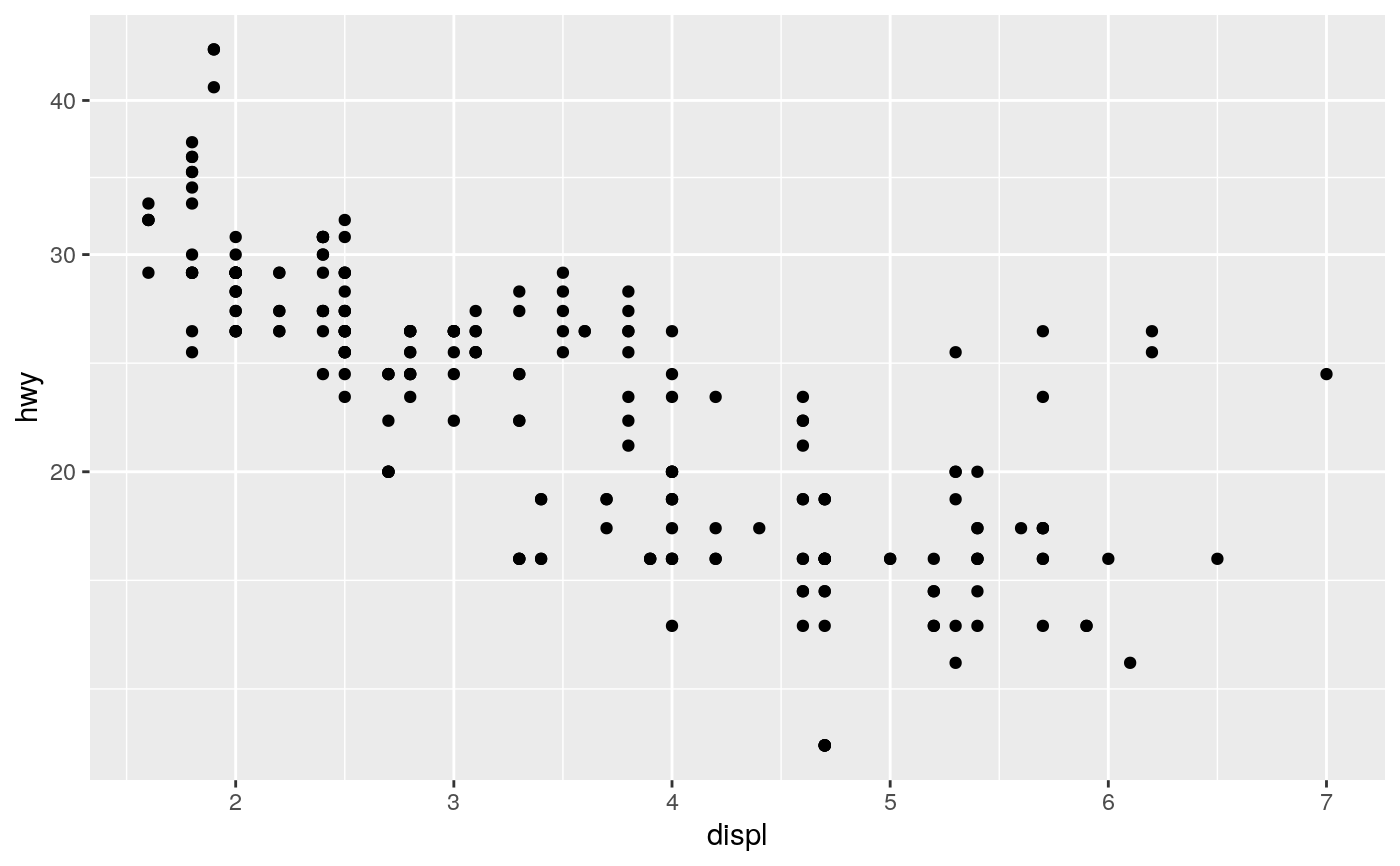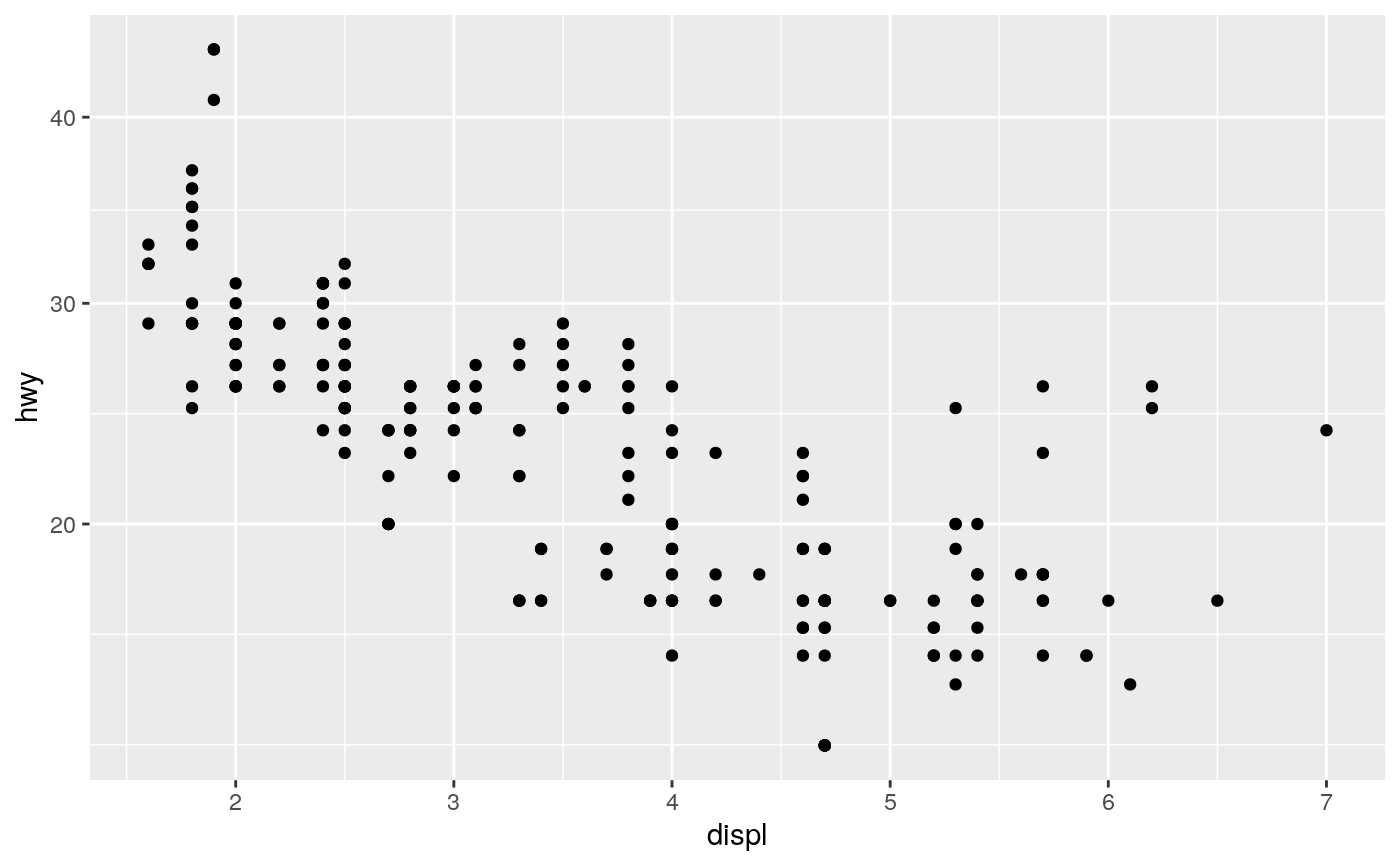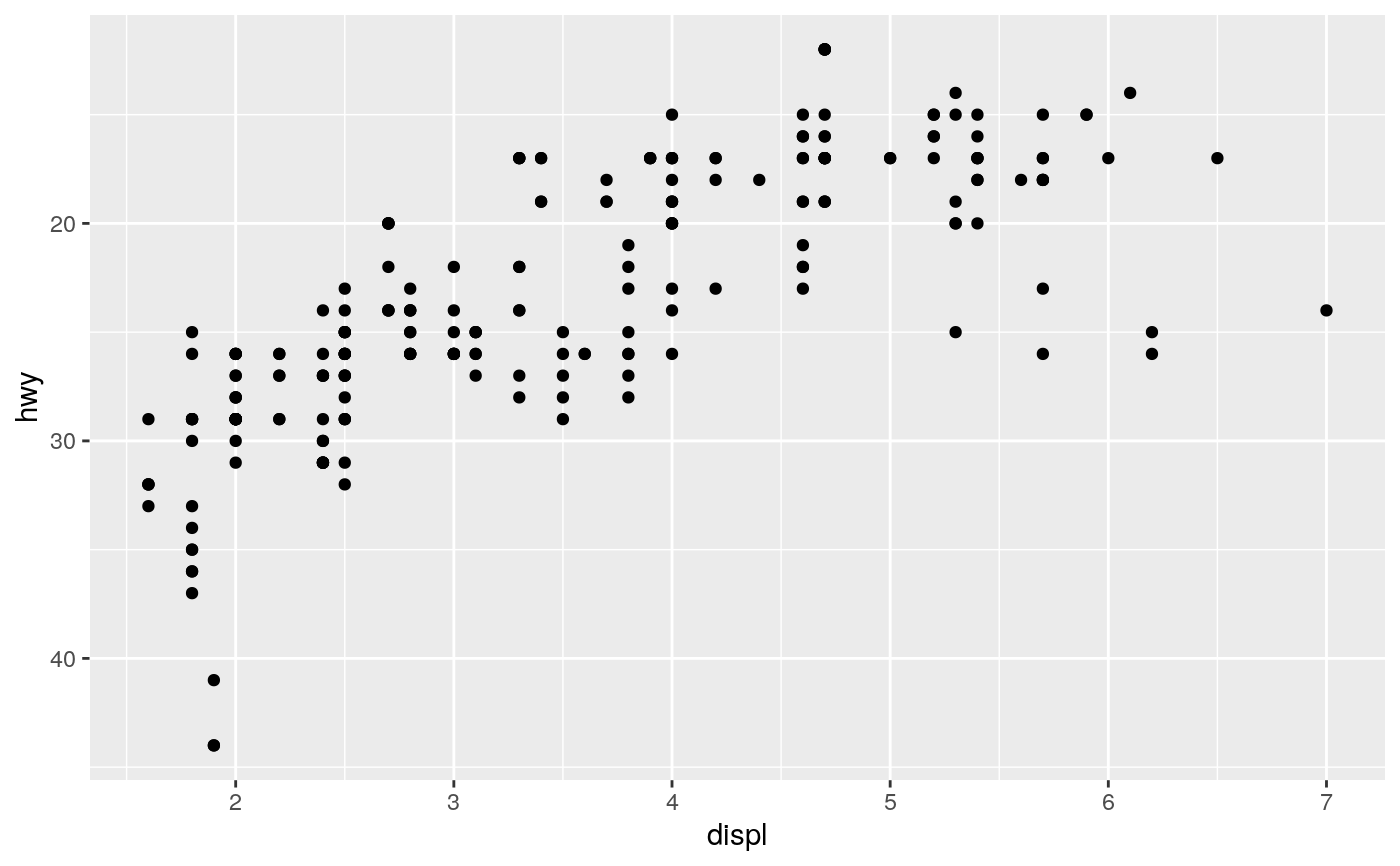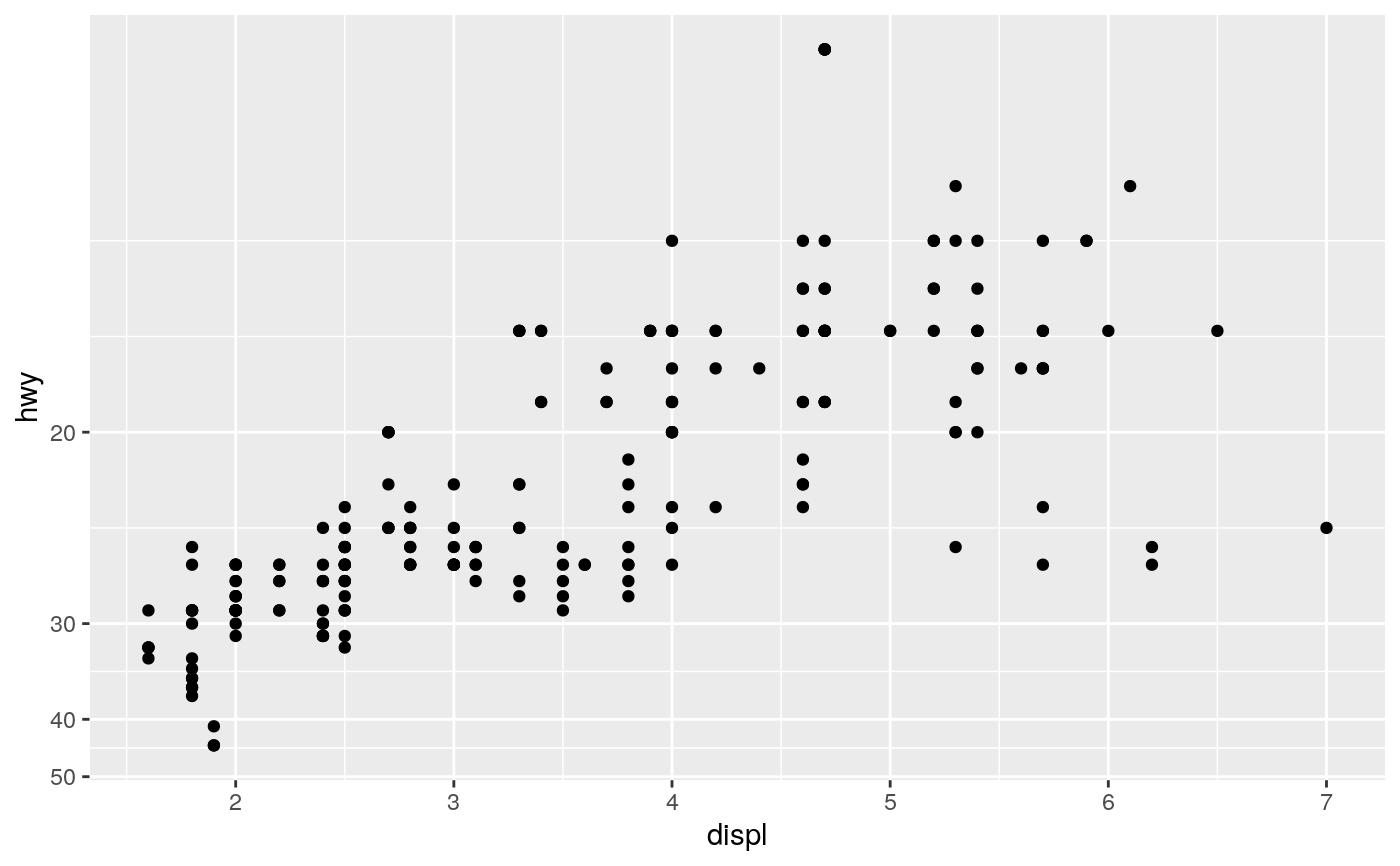scale_x_continuous() and scale_y_continuous() are the default
scales for continuous x and y aesthetics. There are three variants
that set the trans argument for commonly used transformations:
scale_*_log10(), scale_*_sqrt() and scale_*_reverse().
scale_x_continuous( name = waiver(), breaks = waiver(), minor_breaks = waiver(), n.breaks = NULL, labels = waiver(), limits = NULL, expand = waiver(), oob = censor, na.value = NA_real_, trans = "identity", guide = waiver(), position = "bottom", sec.axis = waiver() ) scale_y_continuous( name = waiver(), breaks = waiver(), minor_breaks = waiver(), n.breaks = NULL, labels = waiver(), limits = NULL, expand = waiver(), oob = censor, na.value = NA_real_, trans = "identity", guide = waiver(), position = "left", sec.axis = waiver() ) scale_x_log10(...) scale_y_log10(...) scale_x_reverse(...) scale_y_reverse(...) scale_x_sqrt(...) scale_y_sqrt(...)
Arguments
| name | The name of the scale. Used as the axis or legend title. If
|
|---|---|
| breaks | One of:
|
| minor_breaks | One of:
|
| n.breaks | An integer guiding the number of major breaks. The algorithm
may choose a slightly different number to ensure nice break labels. Will
only have an effect if |
| labels | One of:
|
| limits | One of:
|
| expand | For position scales, a vector of range expansion constants used to add some
padding around the data to ensure that they are placed some distance
away from the axes. Use the convenience function |
| oob | One of:
|
| na.value | Missing values will be replaced with this value. |
| trans | For continuous scales, the name of a transformation object or the object itself. Built-in transformations include "asn", "atanh", "boxcox", "date", "exp", "hms", "identity", "log", "log10", "log1p", "log2", "logit", "modulus", "probability", "probit", "pseudo_log", "reciprocal", "reverse", "sqrt" and "time". A transformation object bundles together a transform, its inverse,
and methods for generating breaks and labels. Transformation objects
are defined in the scales package, and are called |
| guide | A function used to create a guide or its name. See
|
| position | For position scales, The position of the axis.
|
| sec.axis |
|
| ... | Other arguments passed on to |
Details
For simple manipulation of labels and limits, you may wish to use
labs() and lims() instead.
See also
Other position scales:
scale_x_binned(),
scale_x_date(),
scale_x_discrete()
Examples
# Manipulating the default position scales lets you: # * change the axis labels p1 + scale_x_continuous("Engine displacement (L)") + scale_y_continuous("Highway MPG")# You can also use the short-cut labs(). # Use NULL to suppress axis labels p1 + labs(x = NULL, y = NULL)#> Warning: Removed 27 rows containing missing values (geom_point).#> Warning: Removed 27 rows containing missing values (geom_point).# * choose your own labels p1 + scale_x_continuous( breaks = c(2, 4, 6), label = c("two", "four", "six") )# Typically you'll pass a function to the `labels` argument. # Some common formats are built into the scales package: df <- data.frame( x = rnorm(10) * 100000, y = seq(0, 1, length.out = 10) ) p2 <- ggplot(df, aes(x, y)) + geom_point() p2 + scale_y_continuous(labels = scales::percent)# You can also override the default linear mapping by using a # transformation. There are three shortcuts: p1 + scale_y_log10()p1 + scale_y_sqrt()p1 + scale_y_reverse()# Or you can supply a transformation in the `trans` argument: p1 + scale_y_continuous(trans = scales::reciprocal_trans())# You can also create your own. See ?scales::trans_new
